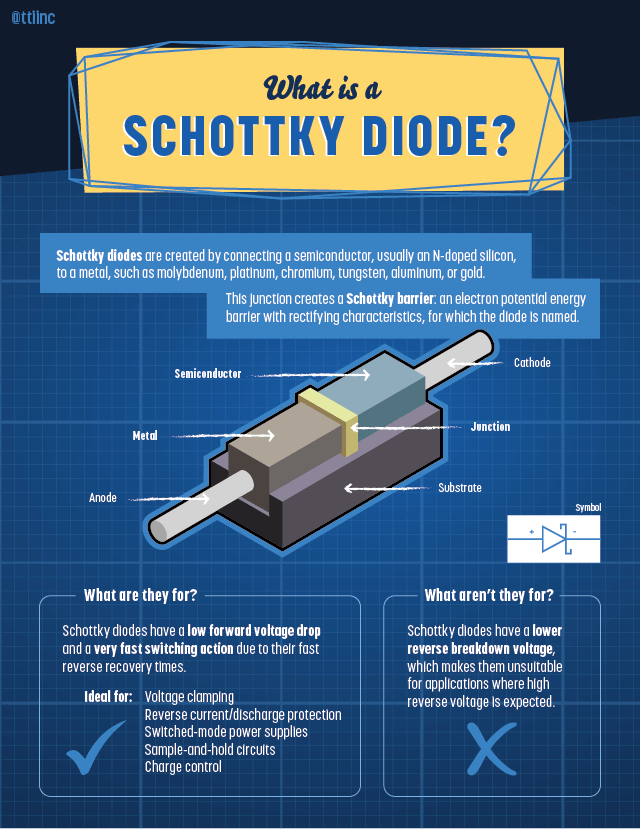Diagram Of A Schottky Diode
What is a Schottky diode and how does it work?
Schottky diodes are created by connecting a semiconductor, usually an N-doped silicon, to a metal, such as molybdenum, platinum, chromium, tungsten, aluminum, or gold. This junction creates a Schottky barrier: an electron potential energy barrier with rectifying characteristics, for which the diode is named.
What are Schottky diodes used for?
Schottky diodes have a low forward voltage drop and a very fast switching action due to their fast, reverse recovery times. This process makes them ideal for applications in voltage clamping, reverse current/discharge protection, switched-mode power supplies, sample-and-hold circuits, and charge control.
What are Schottky diodes not used for?
Schottky diodes have a lower reverse breakdown voltage, making them unsuitable for applications where high reverse voltage is expected.
Looking for Schottky diodes? Search TTI's Inventory
